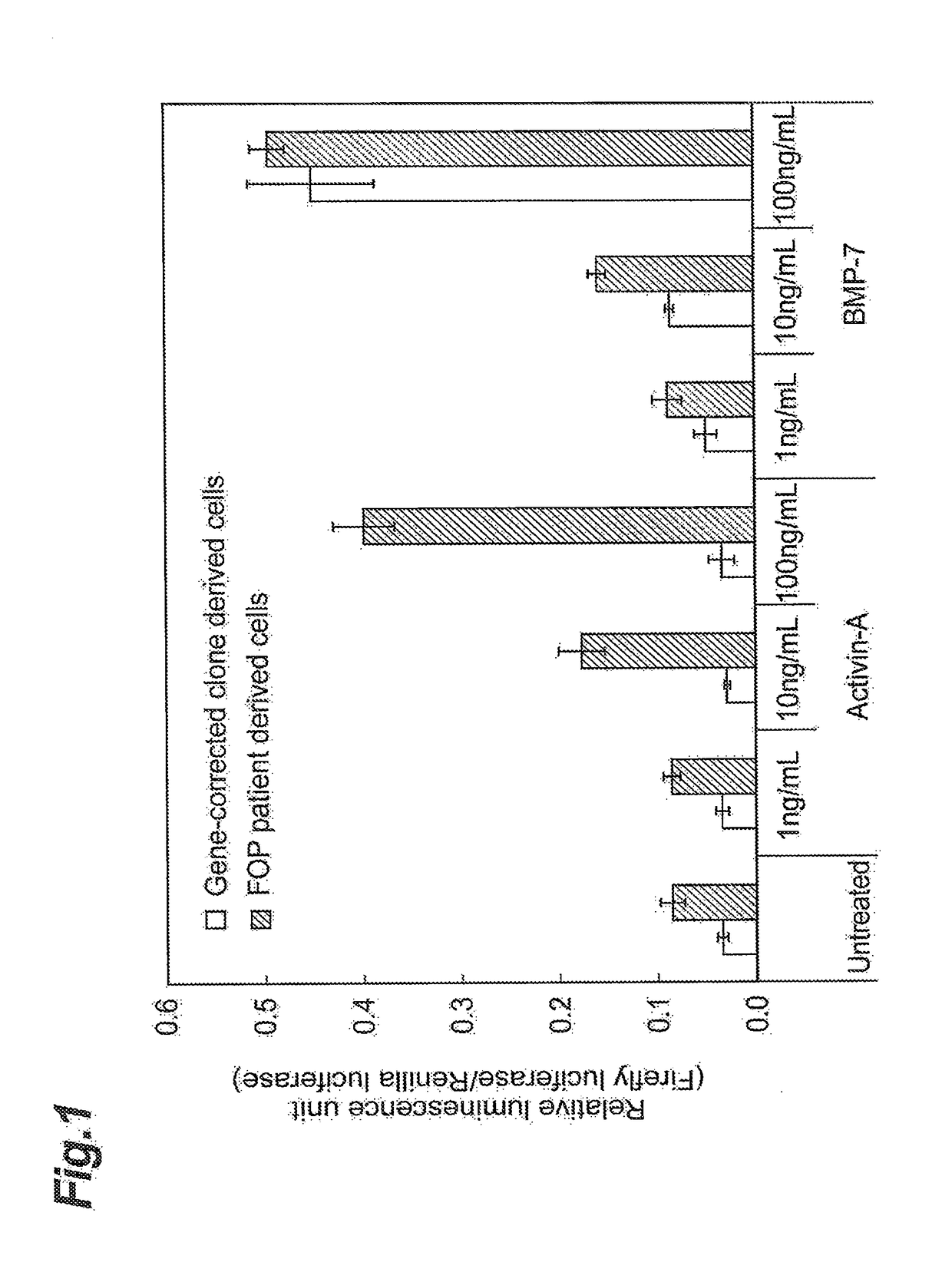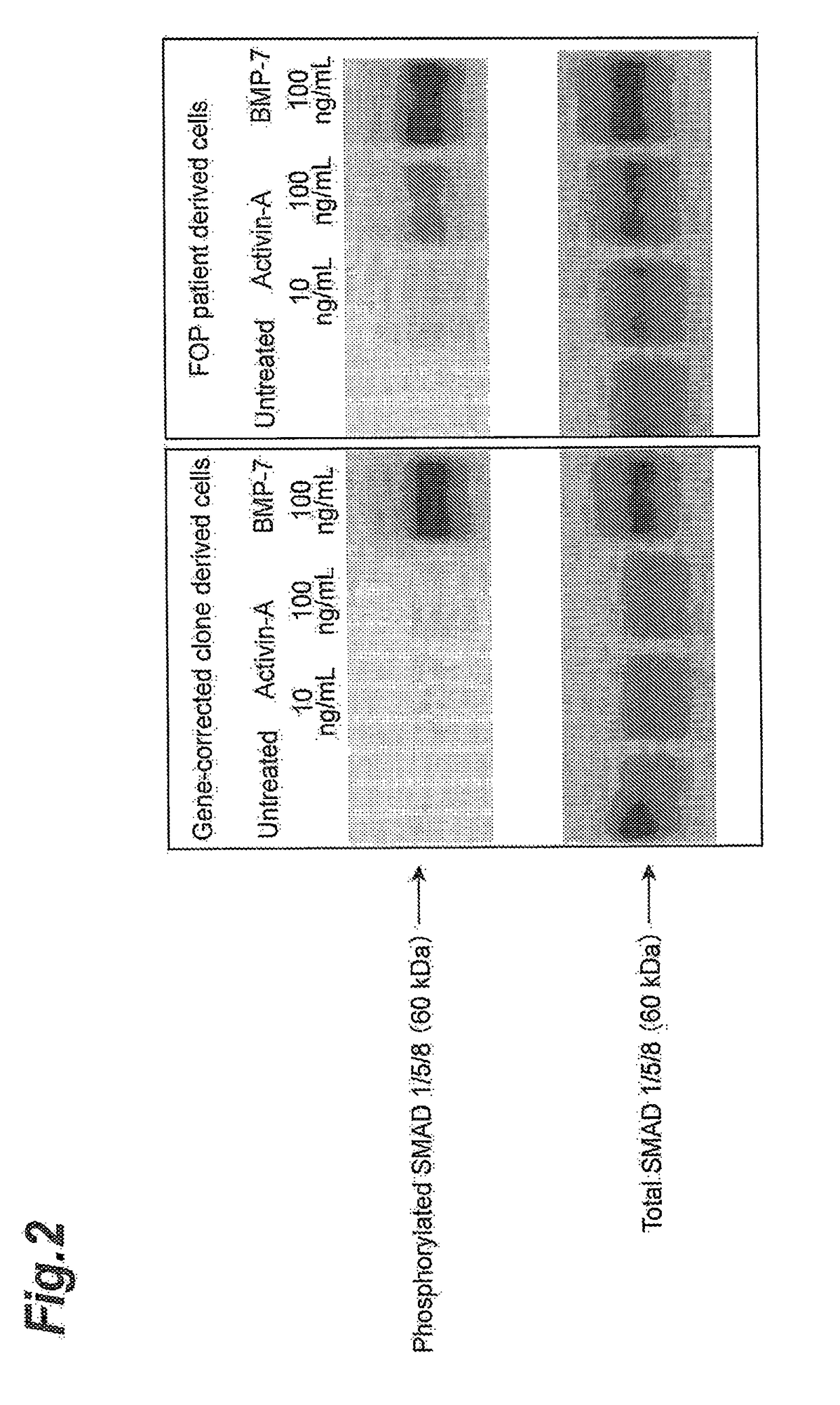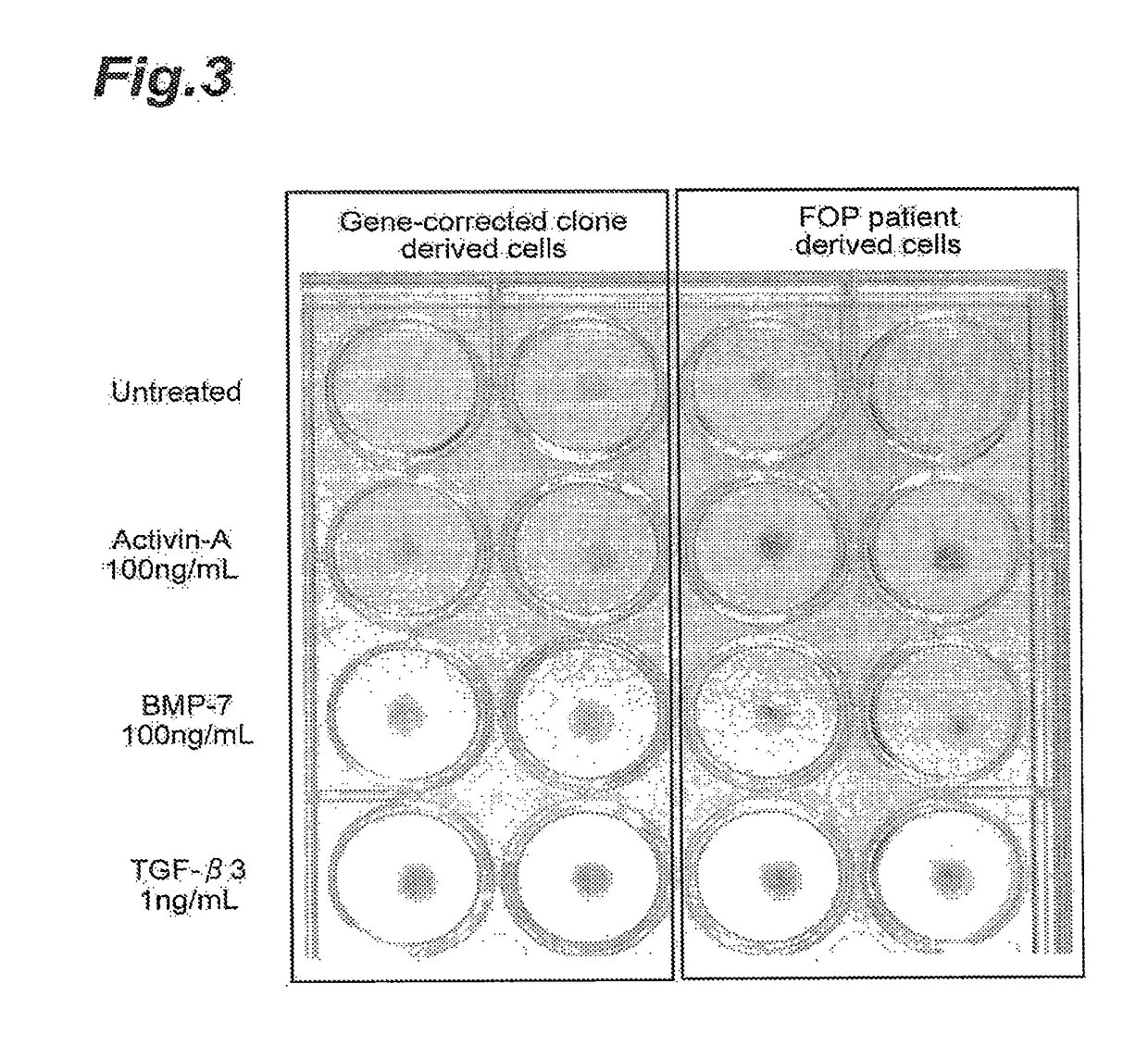Prophylactic Agent and Therapeutic Agent for Fibrodysplasia Ossificans Progressiva
a fibrodysplasia ossificans, a technology of fibrodysplasia ossificans, applied in the direction of immunoglobulins, peptides, drugs against animals/humans, etc., can solve the problems of articular contracture, deformation or mobility impairmen
- Summary
- Abstract
- Description
- Claims
- Application Information
AI Technical Summary
Benefits of technology
Problems solved by technology
Method used
Image
Examples
example 1
n of Transcription Activity Via FOP Patient-Derived ACVR1
[0261](Method)
[0262]Following the method of Yamanaka et al. (Cell, 2007, 131 (5), 8611-8672), FOP patient-derived iPS cells (hereunder also referred to as “patient-derived iPS cell line”) were established. The patient cells were confirmed to be cells having a typical FOP-associated mutation in the ACVR1 gene. The mutation is a substitution of the 206th arginine residue of the amino acid sequence of ACVR1 (the amino acid sequence listed as SEQ ID NO: 10) with a histidine residue. Next, for use as a control, an iPS cell line with the ACVR1 gene mutation repaired to the normal type (wild type) by gene repair by a BAC knockin vector (hereunder also referred to as “gene-corrected iPS cell clone” or “gene-rescued iPS cell clone”) was established.
[0263]The patient-derived iPS cell line and gene-corrected iPS cell line were cultured on the matrix of a Matrigel coated plate (trade name: Growth Factor Reduced (GFR)BD Matrigel® by Becton...
example 2
n of SMAD1 / 5 / 8 Phosphorylation
[0267](Method)
[0268]Mesenchymal stem cell-like cells from a patient iPS cell line and a gene-corrected iPS cell clone were each prepared by the same method as Example 1. Culturing was conducted for 60 minutes with addition of 10 ng / mL and 100 ng / mL of human activin A or 100 ng / mL of human BMP-7 to the mesenchymal stem cell-like cells. The cells were then solubilized with 300 μL of a dissolving solution (70 mM Tris-HCl buffer solution, pH 6.8, 11.2% glycerol, 3% sodium dodecyl sulfate), and a cell extract was prepared. The amount of phosphorylated SMAD1 / 5 / 8 and the amount of total SMAD1 / 5 / 8 in the obtained cell extract were quantified by Western blotting. As the primary antibody for phosphorylated SMAD1 / 5 / 8 there was used rabbit anti-phosphorylated SMAD1 / 5 / 8 antibody [product of Cell Signaling Tech., trade name: Phospho-Smad1 (Ser463 / 465) / Smad5 (Ser463 / 465) / Smad8 (Ser426 / 428) Antibody (Rabbit)], and as the primary antibody for total SMAD1 / 5 / 8 there was u...
example 3
Differentiation to Chondrocytes
[0271](Method)
[0272]Mesenchymal stem cell-like cells from a patient iPS cell line and a gene-corrected iPS cell clone were each prepared by the same method as Example 1. The mesenchymal stem cell-like cells were cultured for 6 days under the medium conditions used in the method of Umeda et al. (Sci. Rep., 2012, 2, 455), for differentiation to chondrocytes. During differentiation, 100 ng / mL of human activin A, 100 ng / mL of human BMP-7 or 1 ng / mL of human TGF-β3 (product of R&D Systems, Inc., trade name: Recombinant Human TGF-beta 3) was added and the effect of each factor on differentiation to chondrocytes was examined. The extent of differentiation to chondrocytes was measured with Alcian blue dye and a sulfated glycosaminoglycan assay kit (product of Biocolor, Ltd., trade name: Blyscan Glycosaminoglycan Assay Kit). The results are shown in FIG. 3 and FIG. 4. In FIG. 4, the bar graph indicates the mean values for each treated group, and the error bars ...
PUM
| Property | Measurement | Unit |
|---|---|---|
| temperature | aaaaa | aaaaa |
| pH | aaaaa | aaaaa |
| temperature | aaaaa | aaaaa |
Abstract
Description
Claims
Application Information
 Login to View More
Login to View More - R&D
- Intellectual Property
- Life Sciences
- Materials
- Tech Scout
- Unparalleled Data Quality
- Higher Quality Content
- 60% Fewer Hallucinations
Browse by: Latest US Patents, China's latest patents, Technical Efficacy Thesaurus, Application Domain, Technology Topic, Popular Technical Reports.
© 2025 PatSnap. All rights reserved.Legal|Privacy policy|Modern Slavery Act Transparency Statement|Sitemap|About US| Contact US: help@patsnap.com



